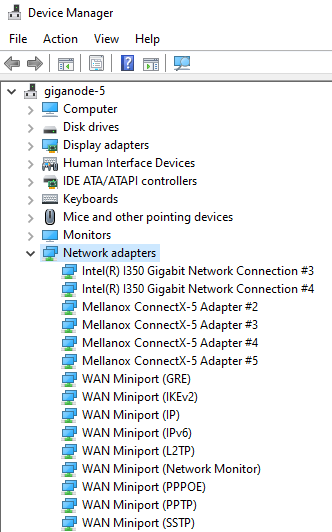RDMA Supported Versions of Windows 10/11
Which current versions of the Windows desktop client OS include support for RDMA?
SMB Direct is a technology that bypasses the TCP/IP stack and allows utilisation of RDMA (Remote Direct Memory Access) between client and server.
Only certain releases of Windows 10 & 11 support RDMA. This is detailed in the following table:
| Windows version | RDMA client support | Notes |
|---|---|---|
| Windows 10 Home | No | |
| Windows 10 Pro | Yes, with condition | Requires a clean installation of build 22H2 or higher; RDMA absent if OS has been upgraded from build prior to 22H2 |
| Windows 10 Pro for Workstations | Yes | |
| Windows 10 Pro Education | Yes, with condition | Requires a clean installation of build 22H2 or higher; RDMA absent if OS has been upgraded from build prior to 22H2 |
| Windows 10 Education | Yes | |
| Windows 10 Enterprise | Yes | |
| ----------------- | ||
| Windows 11 Home | No | |
| Windows 11 Pro | Yes | |
| Windows 11 Pro for Workstations | Yes | |
| Windows 11 SE for Education | No | |
| Windows 11 Pro Education | Yes | |
| Windows 11 Education | Yes | |
| Windows 11 Enterprise | Yes |
Table 1.1 – Different releases of Windows 10/11 and their support of RDMA / SMB Direct.
RDMA support has also been included since the release of Windows Server 2012 and should be active within the OS by default.
Follow these steps to ensure you have all requirements in place to support RDMA:
-
Establish you are running an appropriate version of Windows. From either the Start Menu, Command Prompt or PowerShell, type and execute the following command:
winver
This will display an on-screen dialogue box confirming your version of Windows, such as the one below:
Figure 1.1 - This system is shown (highlight added for emphasis) to be running Windows 11 Pro, which supports RDMA. -
Having established a valid RDMA supporting version of Windows 10 or Windows 11, from the PowerShell, run the following command to indicate whether the NICs on your system are RDMA capable:
Get-SMBClientNetworkInterface
The third column of output indicates RDMA capability as ‘True’ if available and ‘False’ if not:
Figure 1.2 – Showing RDMA capability of NICs in a supported system. infoIf this command is executed under a non-RDMA supported version of Windows, it will return the result as ‘False’ even if the NIC is RDMA capable because the wider OS is incapable of utilising RDMA.
-
If it's certain a compatible version of Windows 10 or newer is in place, and that your NIC definitely supports RDMA, then you may need to check you have the latest valid drivers to enable RDMA functionality of your network adapter. The method of updating drivers will vary from one vendor to another, and it’s best to visit the website of your NIC manufacturer to search for the latest appropriate drivers. You can check your existing driver version in Windows by going to the Control Panel -> Device Manager. From this window expand Network Adapters to display all the NICs in your system as demonstrated in the snippet below:

Figure 1.3 – partial view of an expanded ‘Network adapters’ list in device manager.
Right-click the desired network adapter instance and then select Properties to bring up a separate window for that specific NIC. Selecting the Driver tab will give you further information about the driver you have installed:

Figure 1.4 – Driver tab of NIC properties, showing information about the current driver installed.
In almost all cases we’ve seen where RDMA is not available on a system with an RDMA compatible NIC, this has been due to utilisation of an instance of Windows 10 Pro which was upgraded from a release prior to 22H2. In these instances, as soon as users either upgraded to one of the other supported editions of Windows 10/11, or did a clean install of Windows 10 Pro 22H2 or higher, RDMA support became available.